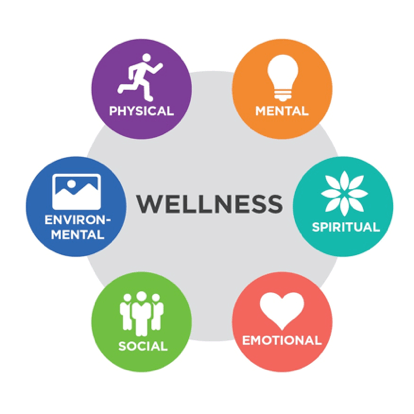The Global Wellness Institute defines wellness as the active pursuit of activities, choices and lifestyles which lead to a state of holistic health. This definition suggests that wellness is not a static state or a destination but rather an active pursuit. Perhaps one would ask what a balanced wellness approach should look like, more specifically in the built environment. Before we can answer that, we need to understand balance in its own context. Balance is defined as a situation in which different things exist in equal, correct, or good amounts.
Balancing work with life has been a way of living we have had to prioritize, especially throughout and post the COVID pandemic. Businesses had to create space for wellness (activities, choices and lifestyles), not only as a benefit to employees but also as a reciprocal gain for the business itself. As we have come to realize, when human resources thrive in business, companies win.
Has the balance, however, been achieved?
In some activities and choices, one would say yes. The experiences of the past few years have compelled most of us to acknowledge the fragility of life. Priorities have been centred around wellness and our workplaces have had to reflect our revised priorities. Being offered the choice to work from home is one example (combined with working flexible hours in uplifting environments).
The past year has refocused people’s minds on what really matters in life – family, friends and community, health and wellbeing, personal fulfilment and individual values. It is reported that companies that recognised the need to adapt to people’s changed expectations by creating a more balanced workplace have been most successful in the post-COVID world, attracting and retaining the best talent. The global trends have seen businesses which failed to adapt to these changes lose their key talent and fail to attract new talent.
The Global Talent Trend report conducted in 2022 saw the following outcomes from their talent driver’s survey. Candidates ranked their priorities (as of August 2022) as follows:
- Compensation – Excellent compensation and benefits
- Balance – Organizational support to balance work and personal life
- Flexibility – Flexible work arrangements (i.e.; when and where you work)
- Upskilling – Opportunities to learn new, highly desired skills
The above findings indicate that candidates still value balance as one of the top priorities post the pandemic. The study also shows that wellness within the workspace needs continuous re-evaluation and should not be passive or driven by pandemic-related circumstances. Research shows that Organisations have had to reposition themselves for a more balanced workplace environment to entice and retain staff post-COVID. This not only helps organisations to re-establish their culture and foster collaborations but also assists organisations to be more aware and contribute towards the environment, social and corporate governance (ESG)
Organisations which move away from treating their workplace as a cost centre and view it as a business and people enabler, a physical manifestation of their brand, will be the post-pandemic success stories. A balanced workplace approach is a great place to start.
How should we encourage and support a balanced workplace approach?
(Skinner, Ashley, 2021) suggests that people should be supported to lead fulfilled lives, where all aspects of their existence – work, family, hobbies and personal values – are embraced. But what does it actually mean and how?
- Work – continue to encourage flexible working hours and working from anywhere under supervision. The Built Environment has enabling systems that allow working remotely to be possible.
- Family – On an annual basis, managers and supervisors are to conduct discussions and encourage their teams to take annual leave or family responsibility leave without waiting for the leave to be lodged by employees. Checking in with your employees from time to time would be crucial and would only make this possible if you understand your employees’ lives beyond the work environment. The promise of a more balanced workplace will help organisations retain staff and will also encourage employees to be highly engaged and productive. A balanced workplace boosts morale.
- Wellness programs – As previously described, wellness is multi-dimensional. It relates to intention, action and activities – investing and Introducing wellness programs in the workplace to better understand the needs of the employees.

Wellness in the Built Environment
There is a clear link between workplace stress in the construction industry and the negative effects on the health of construction employees and their families. It is the responsibility of employers to be alive to this reality. Besides the improvement of better work performance, I believe employers also need to engage in dialogues and ask how employees are coping. Employees are sometimes reluctant to admit that it is in actual fact their mental health challenges that are affecting their work performance for fear of being labelled failures. Together with providing safe and uplifting spaces, employers in the construction and Built Environment could provide enabling software and technology. Incorporate compulsory leave to avoid burnout, especially on projects that span over 12 months. So, if you are feeling a little bit stressed you can still choose a suitable work environment to help with your mental wellness and clarity.
Provide break-away spaces that promote innovation and confidence. Introduce and incorporate voluntary medical assessments.
The construction industry and built environment on its own comprise various sectors and segments of professionals, contractors, subcontractors and clients. From a Quantity Surveying profession perspective, if you are not facing deadlines, accuracy in delivering your work, tendering processes and cost management, you are also chasing revenue. We tend to operate on auto-pilot and sometimes struggle with workload balance.
The introduction of occupational therapy can also act as an intervention that will enable employees to disclose their difficulties openly without any fear of losing their jobs. On the other end, the employer can provide specific employee requirements to assist them with remaining productive.
FURTHER INFORMATION:



